|
PHILIPPINES
Work
To work in the
Philippines is an
adventure in itself.
īThe climate is tropical,
it is not possible
to work in the same
speed as in the
northern Europe, and
to find a work
concludes more than
to have knowledge
within a certain
skill. In the
Philippines is the
difference between
being Philippine and
foreign more than
the outlook. The
Philippines is a
poor country and is
classified as a
development country
by the UN (even if UN
has classified
Philippines as a
development country
today, due to its
economy, it is not
seen in the whole
country, but only
for a limited area).
-
The corruption that
meets a foreign
export/import company, which
intentions is to sell
products or services to the
Philippines, directs the
company to aim on domestic
production instead of
importing products to the
Philippines.
To import products to the Philippines,
without support from
government officers or other
with high dignity in the
society, makes through extra
tithes and bribes for custom
and transport, the products
so expensive to import that
it is more effective to
produce domestic copies.
-
This in turn gives that the
citizens does not get the
ability to share the
development in technology
that many other countries in
Asia get, as for instance,
Thailand, Korea and China.
-
As a
foreign citizen it is
possible to work through
other foreign projects.
Often office related
services or as a supervisor.
To work in the field with
installations i.e. body
work, is only possible when
the foreign worker is
insured and work through a
foreign company.
-
I am myself married and
periodically in the
Philippines, which gives
that I need to arrange my
own work, to have any. To be
employed by a Philippine
company seems impossible at
the time, since one is
worried of the consequences
if I should be in a work
related accident
(hospitalization, allowance,
reputation).
-
I have during the year of
2009 studied some of the
work and the labour culture
in the Philippines and will
here
take you on a guided tour in
the Philippine archipelago.
-
Observe that my
experiences and observations
are personal and can differ
markedly from others
experiences. I have a
personal engagement and
several good friends,
partially through my family
but also through own
contacts.
Baguio City
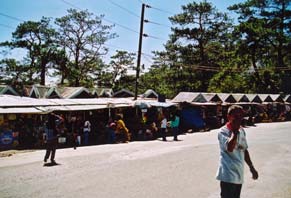
Baguio City is the
highest located city in the
Philippines. The city is
built on the summit of the
mountain Bundok, which
is located in the central
about 250 km
north of Metro Manila.
Unlike other parts of the
Philippines, night
temperature goes down here,
during winter time, to 0
degrees Celsius and below. USA
placed therefore their
military training camp here,
which is now overtaken by PMA, Philippine Military
Academy.
Interesting is to
see the canon by Bofors from
the Worlds War II with
the recognition as one of
the most important weapons
in the war against the
Japanese invaders.
The recognition is fading
when, for those that knows
Bofors, it can be read that
the country of origin is "Dutch",
i.e. Netherlands. How pride
one can feel for ones
Swedish countrymen that has
succeeded to produce quality
without gut to stand for it!
Baguio Market
-
-
In the Philippines
it is not as much street
lights s we are used to in
the northern Europe
(streets, squares,
commercial etc.)
-
Above you can see the same
location by day and night.
In a whole towns commercial
centre you can only see two
signs and a few, easily
counted number of, lamps.
-
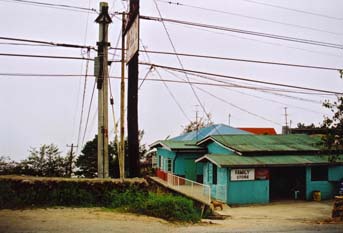
-
A
normal phenomenon in the Philippines
is the local, family owned, stores.
They are found in different sizes
and sells, principally, what the
family is interested of to sell. If
one want to shop here it can
therefore be needed to try a number
of stores before all contents needed
is found.
Decorations
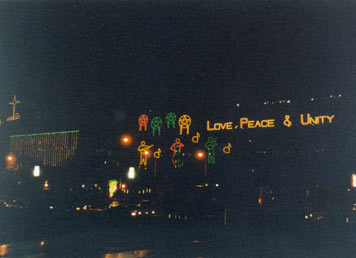
In the Philippines, people
are happy to decorate with
colours and lights. It is
also very beautifully done
by shifting colours and
happy music.
-
To the left you can see a
house
decoration in Manila
during Christmas and the New
Year 1999 -
2000
-
A Christmas tree in metal
that is lighted when dark.
-
It become dark at summer
time at 7pm
and light again at 5am.
-
-
Remark the compact overhead
line network!
Electric
Meters
In the Philippines currency
is bought from the local
energy plant, alike in
Sweden. The difference is
that one does not pay a
current subscription (at
least not in the provinces),
but pay a fee per used kWh.
This gives that if
one want to save money, it
is only to shut off the
electric switch for a while.
It is not either unusual the
there is interruption in the
deliverance of currency, by
different reasons. Rain and
typhoons can strike hard on
the electric networks in
intervals, and some time the
net is shut off for
maintenance reasons. Any
warning is not given in
advance, and in the province
it is not seldom unusual
that a whole village is
de-energized for one or
several days, even due to
zero causes.
The members of the
village is in such cases
turning to a local officer,
for instance a police or
village councillor, who seek
the reason through sending
an ordinance to find what is
the cause of the problem.
Any compensation for the
interruption is not given,
but people takes the
opportunity to defrost and
sell their cool items during
the time.
Let us take a tour in the
Philippines and look at some
solutions under the subject
electricity meters!
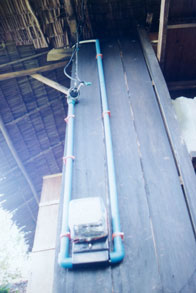 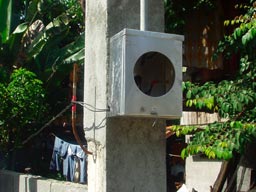
Box
intended for meters in the town of
Carrascal, Surigao del Sur, on the
biggest island Mindanao in the
southern Philippines.
Meter
installation on a
house in a village in Surigao del
Sur on Mindanao.
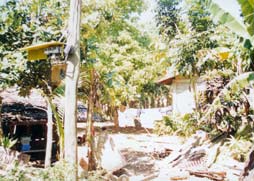
-
Meter under cover in a palm tree on Boracay,
the vacation paradise island in the
Philippines.
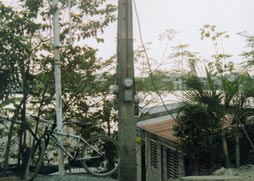
-
Meter on a created pole intended for
houses along the river of Pasig,
outside Metro
Manila.
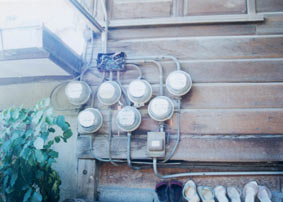
If you live in a
tenement it can look like this!
-
While we are on the run, we
can do a shortcut at another
direction and look at this
installation:
-
Do you see the TV-antenna?
If there is a
TV-antenna, it should be a
TV, but how is it then
powered?
The picture is from a small
fishing village in southern
Philippines on the island
Mindanao.
Transformers
-
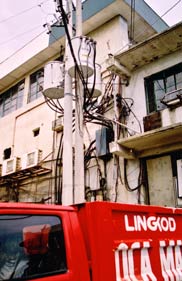 Next
subject is transformers. Next
subject is transformers.
-
The easiest way to deliver
electricity, as it looks like in
the Philippines, is through high
voltage transmission,
from which transformers is built
in periodically.
-
From these, the subscribers are
connected in varying ways.
The picture to the left shows
transformers outside a college in
Caloocan City, Metro
Manila.
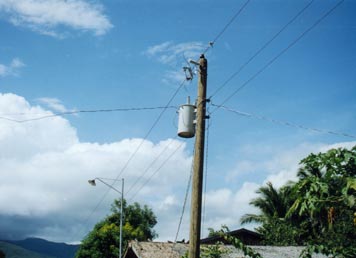
Some times the
installation can look suspicious.
Who want to change the bulb in this
lamp?
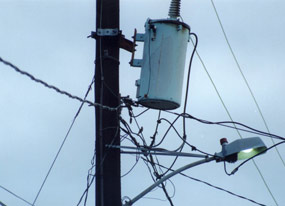
-
-
-
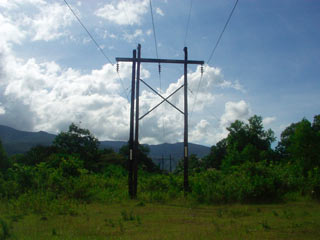
The power is delivered in the same
way
as
in Sweden.
here is a regional network in Surigao
del Sur between Surigao City and Tandag.
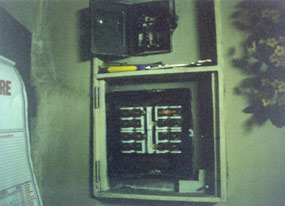
In the consuming end we stands, you
and I, and wonder which fuse that
has gone!
-
The Philippine grid
is of natural reasons built with
American equipment, why (like
partially in Norway) the tiers
is two phase 230v.
-
This fuse box is "read" from
left to right.
The top two are the tier one ,
all in the left row is "outgoing"
while the right is "incoming" (in
Sweden zero) from consumer.
-
-
-
To live in the Philippines
About this subject I could say a
lot, but I chose to show some
pictures, which I summaries and make
notes on.
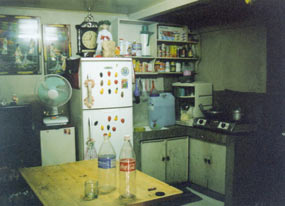
-
This is a normal kitchen in a
middle-class family in the
Manila are.
-
Kitchen and living room is all
in one,
here is some one or some
sleeping in the night.
-
To the left you can see the
TV and beside it, the rice
dispenser, which is filled up
with rice which can be portioned
in 1, 2 or 3 cups
of rice while cooking.
-
A refrigerator with freezer
compartment.
the
freezer
compartment is used to
make ice, which is for sale for
1 - 1,50 pesos per pc.
-
Stove stand has a sink,
freshwater drum, dish rack and a
gas cooker.
-
The gas is bottled and placed in
the cupboard under.
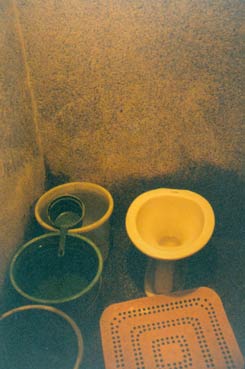
In the
bathroom needs is made as
usual, but it is flushed by
a bucket.
-
In the Philippines, water
pressure from a water tower is a
private affair, why the most
usual is that water is brought
in from a source,
collection point or delivery
point.
This is where to shower too, that's when you use the bucket so that they
can wash themselves.
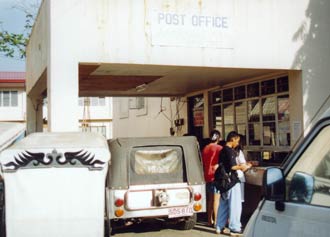
The Post Office
is good to have in order to
maintain contact with the
outside world.
However,
we strive to find postcards to
send.
Usual letters and
congratulations cards is easy to
find and buy, but in the bigger
shopping malls and other places.
The Post Office
is providing stamps.
The Post management in the
Philippines is slow compared to
Sweden, and you cannot trust
that your mail will be delivered.
It is not unusual that the post
is opened, why bills or other
valuables shall not be sent
through mail in the Philippines.
In this matter, not even the
bigger official Post Offices can
be trusted.
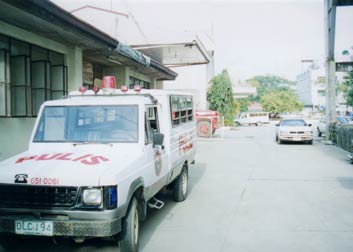
-
Police station.
The police have not at all the
guiding and helping image alike
the Swedish police have.
In the Philippines you shall not
be surprised if the police want
a private fee (bribe) for his
service. The police is also not
equally helpful in the
combination white
foreigner/domestic Filipino.
However, do the police use and a
stub reform is now giving the
police a better reputation in
that it is made clear its vision
and mission while simultaneously
lifting up bribing to the
surface.
In Manila is a huge number of
malls located and the most can
be found in them
from the western world, but it
is also possible to try domestic
delicacies and to eat
traditionally.
These types of Food-Court are
inspired of its American
predecessors, but are on some
locations bigger than its
American ditto.
The traffic is tight and slow.
It is to have patience and take
the day as it appears. Would you
have time for anything in
particular you may start the day
early. It is easier to get
through if you start 5am or
earlier, when sun raise between 05.15 - 06.00
the traffic stocks.
Some attractions:
-
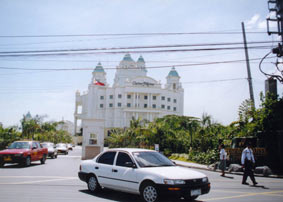
Casino Pilipino in Cebu City
On
Cebu and its close islands Lapu-Lapu
and Mactan nice places to spend
a vacation with sun and bath.
Cebu is reached with flight from
Manila on an hour or with a boat
over night.
Hotel in Lapu-Lapu
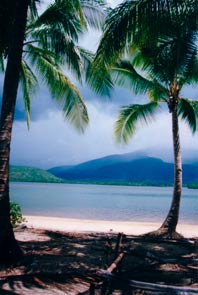
-
Beautiful beaches around the
islands.
-
-
You can take the risk to look
around by hiking or go to given
places like Boracay
and Lapu-Lapu.
-
This place is my own little
favourite spot without tourists.
-
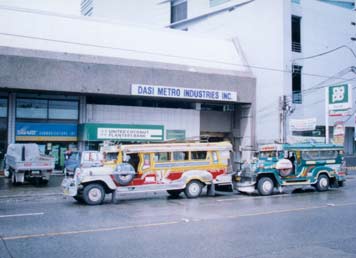
-
Davao City is the
second city of the Philippines, with
many attractions such as
Mount Apo, Yuhico Orchid Gardens,
Eagles Conservation Centre and Pearl
Farm Beach.
-
-
Colourful
jeepneys in Davao City.
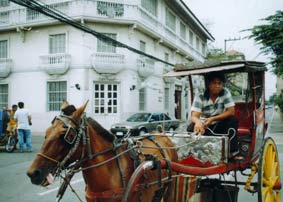
-
Metro Manila with Manila
Here you can experience the 18th
century and take a guided tour with
the famous
cabs from the era. They are found at Intramuros in Manila.
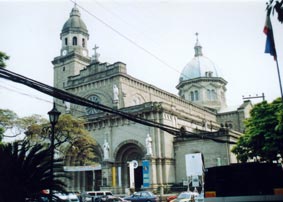
-
Manila Cathedral
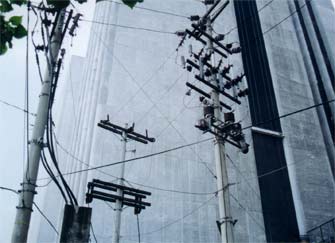
Here is where the Swedish
embassy where recently, but it
was closed in July 2008.
Thank you for this time. Welcome
back! |